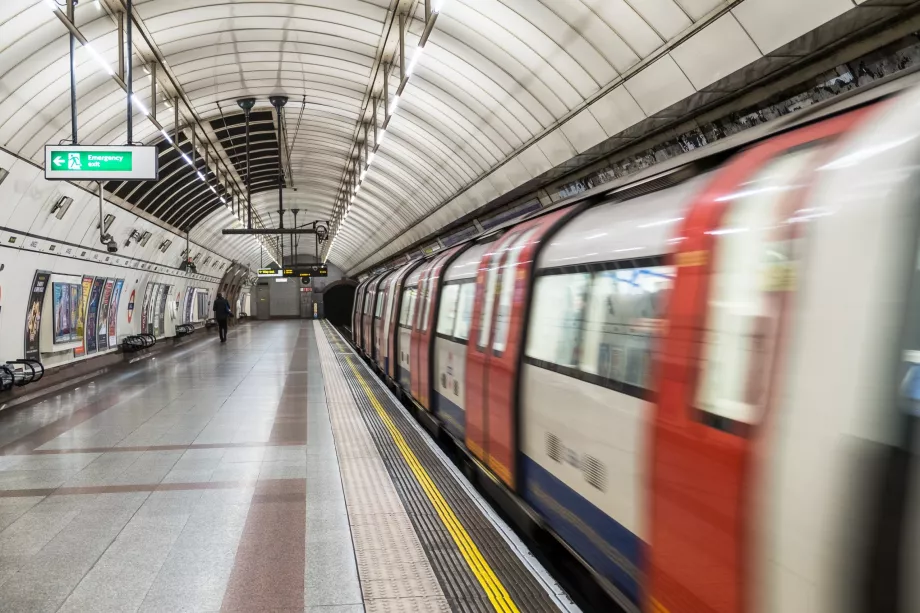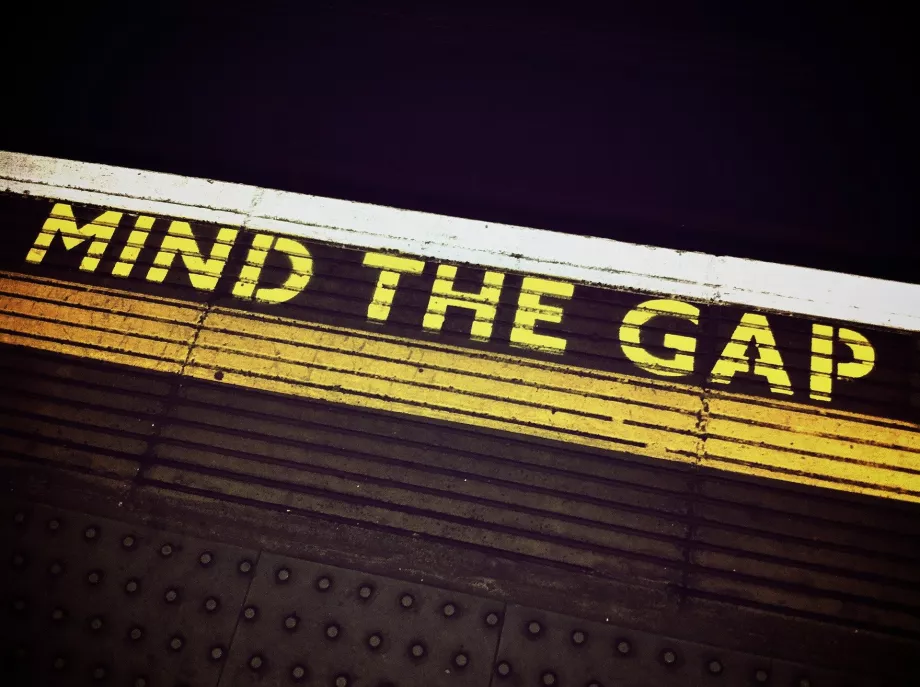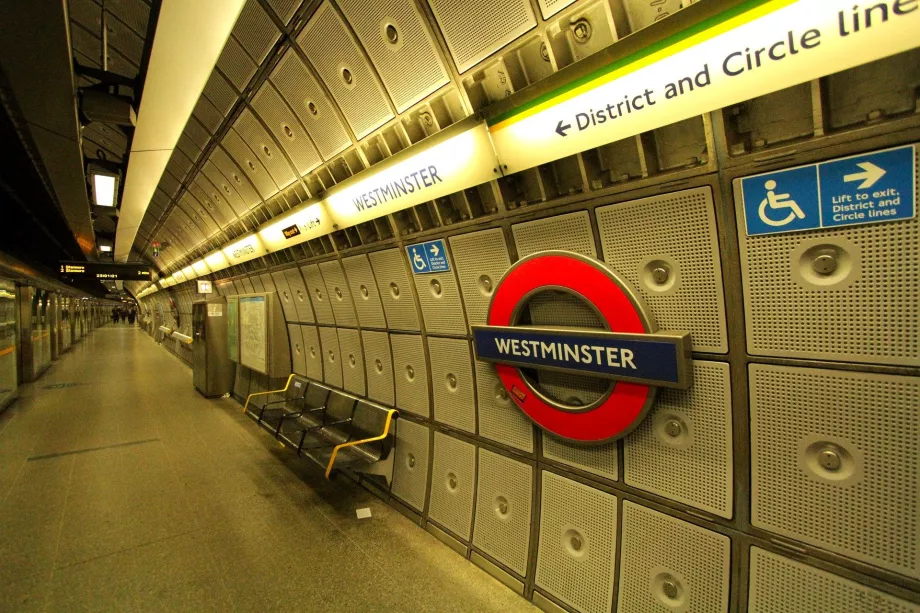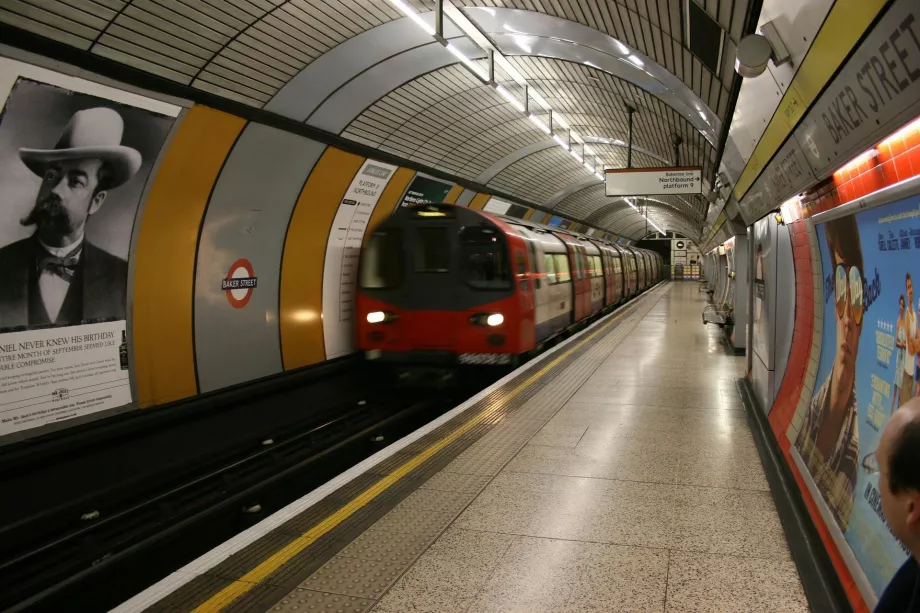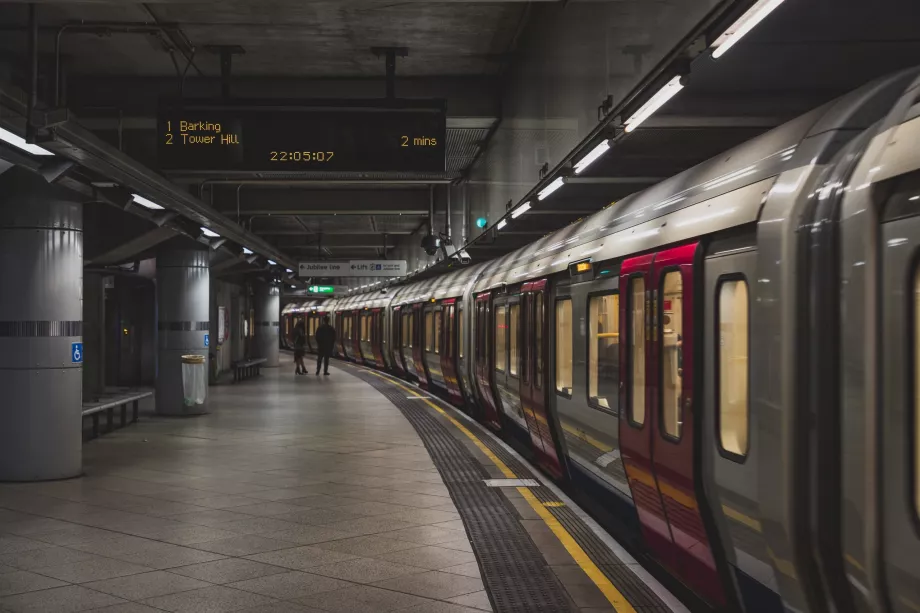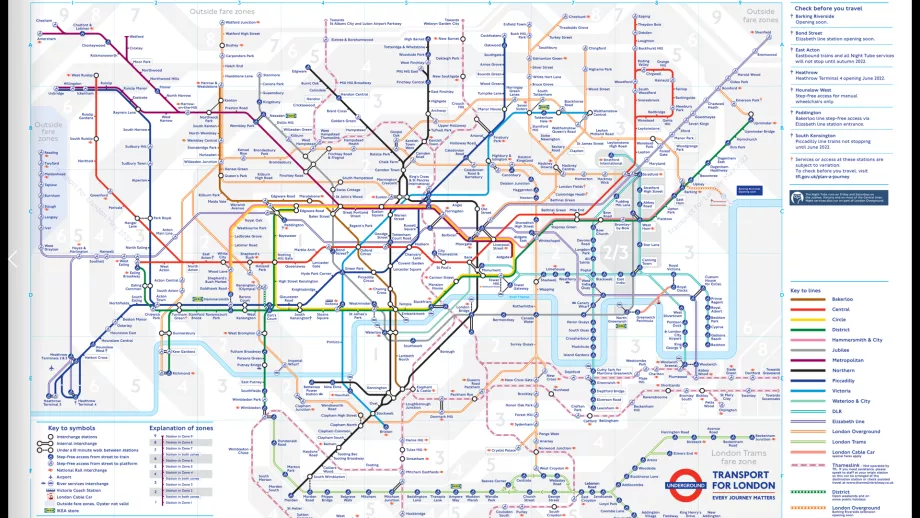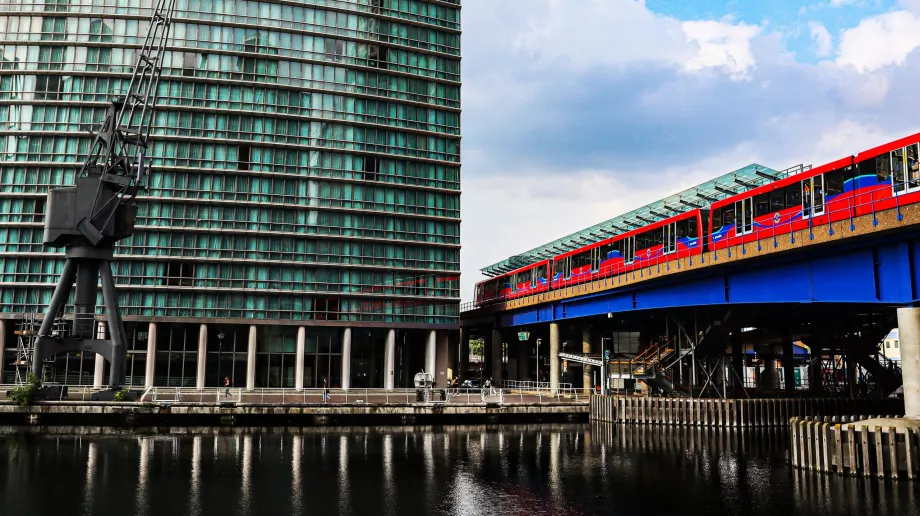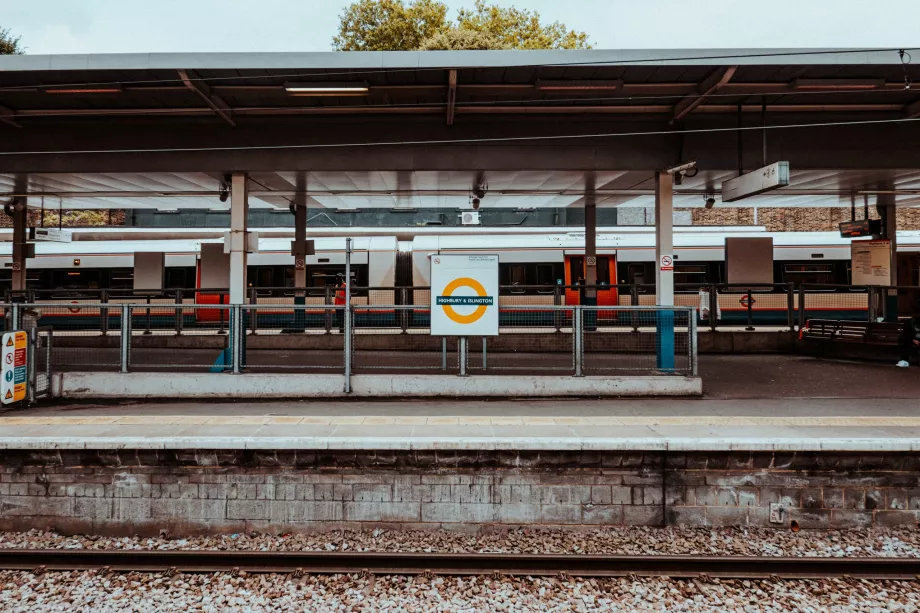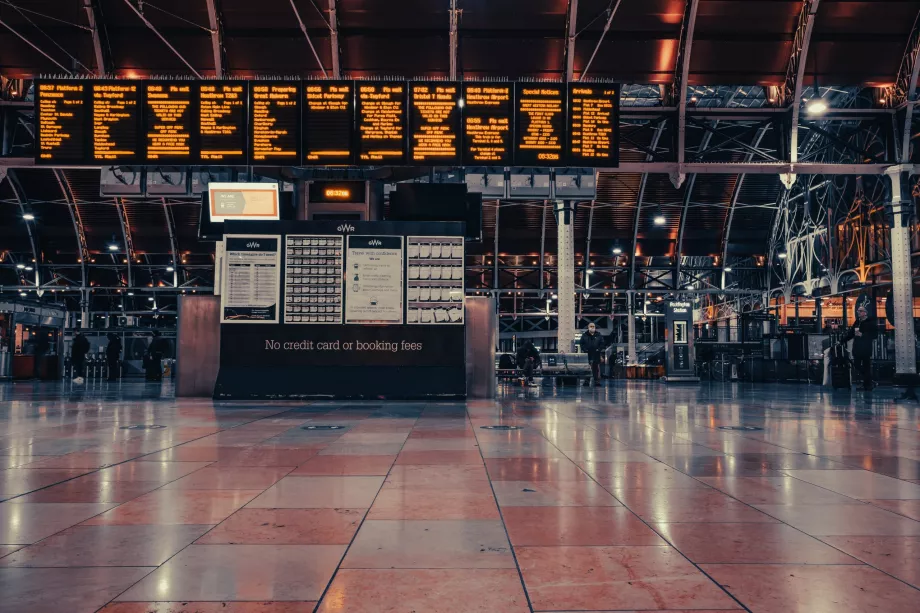Metro in London
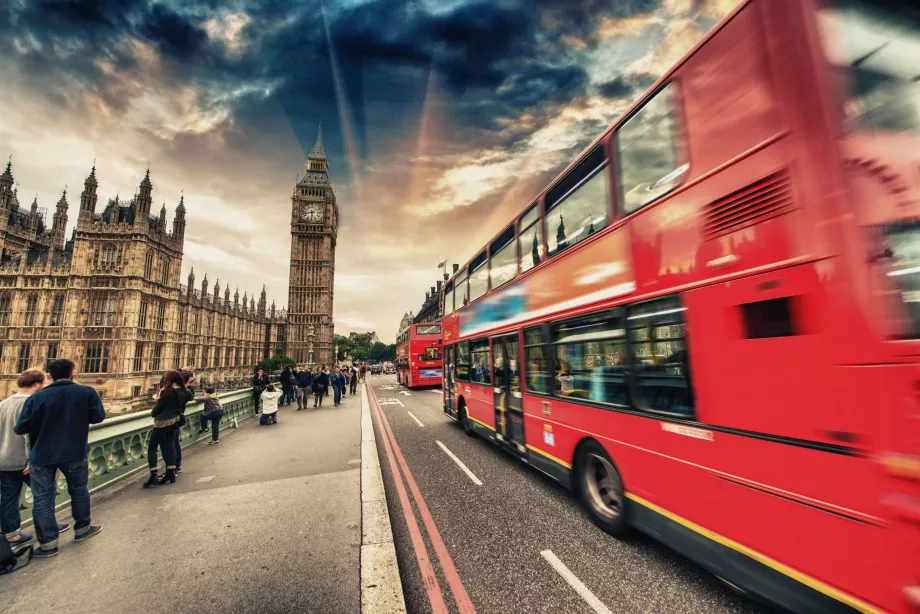
The London Underground is legendary, both for its extensive and efficient network and for being the oldest underground railway in the world.
The first steam trains ran on the London Underground on the Metropolitan line as early as 1863.
Book a hotel near a tube station
The London Underground is so popular that the largest percentage of souvenirs and tourist items bear elements of the London Underground. Some of the most famous souvenirs include the typical Underground emblem (a red circle with a blue cross line with the station name) or the iconic "Please Mind the Gap Between the Train and the Platform" announcement alerting passengers at each station to the gap between the train and the platform.
In English, the most commonly used expression is The Tube, less frequently and more formally, London Underground.
The network of 11 tube lines is complemented by several routes of the DLR automatic tube, the London Overground and regular trains, which can also be used for travel around the city.
Tube lines and interchanges
London's Underground (and, on the outskirts of the city, the surface) is criss-crossed by 11 Tube lines, which take you to all the sights and attractions.
If you're after quick transfers around the wider city centre, you can get by just fine on the Tube without the need for buses. There's a station literally on every corner within the centre.
In London, you'll encounter 2 types of routes: underground, with lower and more cramped trains, and sub-surface, with significantly more spacious trains.
Underground lines in London are distinguished by colour and historical name:
- Bakerloo Line (brown) - crosses London from south-east to north-west, runs for 23 km and was opened in 1906, it is an underground line. London Eye, Trafalgar Square, Piccadilly Circus, Oxford Street, Regent's Park
- Central Line (red) - East-West direction, the second busiest route in London, it is 74 km long and branches off at both ends. It is an underground route and has been in operation since 1900. Sights along the way: Oxford Street, Hyde Park, British Museum, Kensington Palace, St. Paul's Cathedral
- Circle Line (Yellow) - a semi-circular line around the city centre running through major stations, it is 27km long and underground, operating since 1884. Westminster Palace, Westminster Abbey, Big Ben, Downing Street, Buckingham Palace, Kensington Palace, St. Paul's Cathedral, Tower of London, Tower Bridge, London Eye, Sky Garden, Barbican
- District Line (green) - runs through central London near the Thames, divides into several branches in the west, runs for 64 km and has been running since 1868. It is a sub-surface route with roomier trains. Sights along the way.
- Elizabeth Line (Purple) - The latest 'Crossrail' project effectively brings a new tube line incorporating the original Heathrow Airport train, a brand new underground link through central London and another original train line east to Shenfield and the Canary Wharf area. Sights along the way: British Museum
- Hammersmith & City Line (Pink) - the second least used line runs from west to east through the North Centre, covering 25km and operating since 1863. It is a sub-surface route. Sights along the way: Barbican
- Jubilee Line (grey) - the newest underground line opened in 1979, it is an underground line and runs for 36 km. Greenwich, Tate Modern, The Shard, Globe Theatre, Westminster Palace, Westminster Abbey, Big Ben, Downing Street, London Eye
- Metropolitan Line (Purple) - the oldest line running from the centre to well beyond London, sub-surface route opened in 1863, measures 63km, branches off at the northern end. Sights along the way: Barbican
- Northern Line (Black) - the north-south line with the most complex branching is the busiest ever. It is an underground route with a length of 58 km opened in 1890. Westminster Palace, Westminster Abbey, Big Ben, Downing Street, London Eye, British Museum, Camden Market, Sky Garden, The Shard, Oxford Street
- Piccadilly Line (Dark Blue) - The third busiest and deepest underground route in the centre, it is 71km long and branches off to the west. It runs to Heathrow Airport, among others, and opened in 1906. Sights along the way: Piccadily Circus, Hyde Park, Buckingham Palace
- Victoria Line (Light blue) - The second newest and second shortest line opened in 1968, it is a 21km underground route. Sights along the way: Oxford Street, Buckingham Palace
- Waterloo & City Line (Turquoise) - the shortest line is just 2km long, it is an underground route and has no stations other than the termini Waterloo and Bank. It has been in service since 1898
Transfers can seem chaotic at first, especially with the often cramped spaces of historic tube stations and longer corridors meandering in various ways with many staircases and escalators.
But if you read the signs consistently, you can't get lost.
The signage is really clear and will take you exactly where you are going. It's important to always know the name of the final station in the direction you're going. Then you can never get lost.
Ticket prices and how to buy?
London and the surrounding area is divided into 6 fare zones, the price of your ticket is also based on this.
The easiest and cheapest way to pay for tickets is with your own credit card (contactless).
You enter each tube station via turnstiles, where you put your card to a yellow reader and walk through. On leaving the station, you go through the turnstile again, where you must again put your card to the reader to have the fare calculated correctly.
The system also works when paying with a mobile phone, watch or other device that can be loaded with its own card.
The system of day tickets is replaced by the so-called "all-day ticket". Daily Caps, The maximum amount that can be charged to your card per calendar day is replaced by a maximum amount per day. If you reach this limit, you still have to attach your card to the turnstile, but nothing more will be charged to your card. Due to the high cost of single fares when in London, you will always reach the maximum limit per day.
You can also use paper tickets, but these are more expensive than paying by card. On the other hand, the same prices apply when paying with an Oyster Card, which is not worthwhile for tourists as its purchase value is 5 gbp and there is no advantage to using it over your own card.
- Zone 1 or 1+2: contactless 8,90 gbp / 16,60 gbp with a paper ticket, weekly maximum fare for 44,70 gbp
- Zones 1 to 3: contactless 10,50 gbp / 16,60 gbp with paper ticket, weekly maximum fare for 52,50 gbp
- Zones 1 to 4: contactless 12,80 gbp / 16,60 gbp with paper ticket, weekly maximum fare for 64,20 gbp
- Zones 1 to 5: contactless 15,30 gbp / 23,60 gbp with paper ticket, weekly maximum fare for 76,40 gbp
- Zones 1 to 6: contactless 16,30 gbp / 23,60 gbp with paper ticket, weekly maximum fare for 81,60 gbp
- Full price list: tfl.gov.uk/fares
The weekly maximum fare is calculated for each calendar week from Monday to Sunday. So if you're in London from Wednesday to Wednesday, for example, your weekly limit will start to count twice - Wednesday to Sunday and Monday to Wednesday.
Single fares within central London are based on 2,50 gbp to 6 gbp.
London Underground line map
We've produced an interactive map of the Tube, Elizabeth Line, DLR automatic tube and London Overground trains here:
Official maps of the Tube and trains in London are available to download from the Transport for London website: tfl.gov.uk/maps/track/national-rail
Tube Disruptions and Signals
Also because of the age and complexity of the London Underground system, there are very frequent closures to be expected, usually at weekends. However, there are also occasional emergencies and sometimes even some stations are closed due to lack of staff.
It's always a good idea to check the transport company's website under the section on closures to see if your metro line is running its full route.
It's also a good idea to have an offline metro map downloaded on your mobile phone, as there is no signal in the underground sections of the metro.
DLR: Docklands Light Railway
The east London area of the trendy Canary Wharf area is served by several DLR driverless automatic tube lines.
Direct DLR lines run on the following routes:
- Bank - Limehouse - Canary Wharf - Cutty Sark - Greenwich - Lewisham
- Bank - Limehouse - Poplar - Canning Town - London City Airport - Woolwich Arsenal
- Tower Gateway - Limehouse - Poplar - Canning Town - Royal Victoria - Beckton
- Stratford International - Stratford - West Ham - Canning Town - London City Airport - Woolwich Arsenal
- Stratford - West Ham - Poplar - Canary Wharf - Cutty Sark - Greenwich - Lewisham
The ticketing system is the same as for the Underground. You walk to and from the station through turnstiles with card readers.
Overground and National Rail trains
The Underground and DLR line network is supplemented by conventional overground trains operated partly by London Transport (London Overground and Elizabeth Line) and partly by various train companies running from London to other English destinations under the National Rail brand.
All local train services within London Zones 1-9 can be used at the fares shown above. Paying for tickets with your own credit card via the turnstiles that you go through at each station works the same way.
Any questions left?
If you have any questions or comments about the article...

